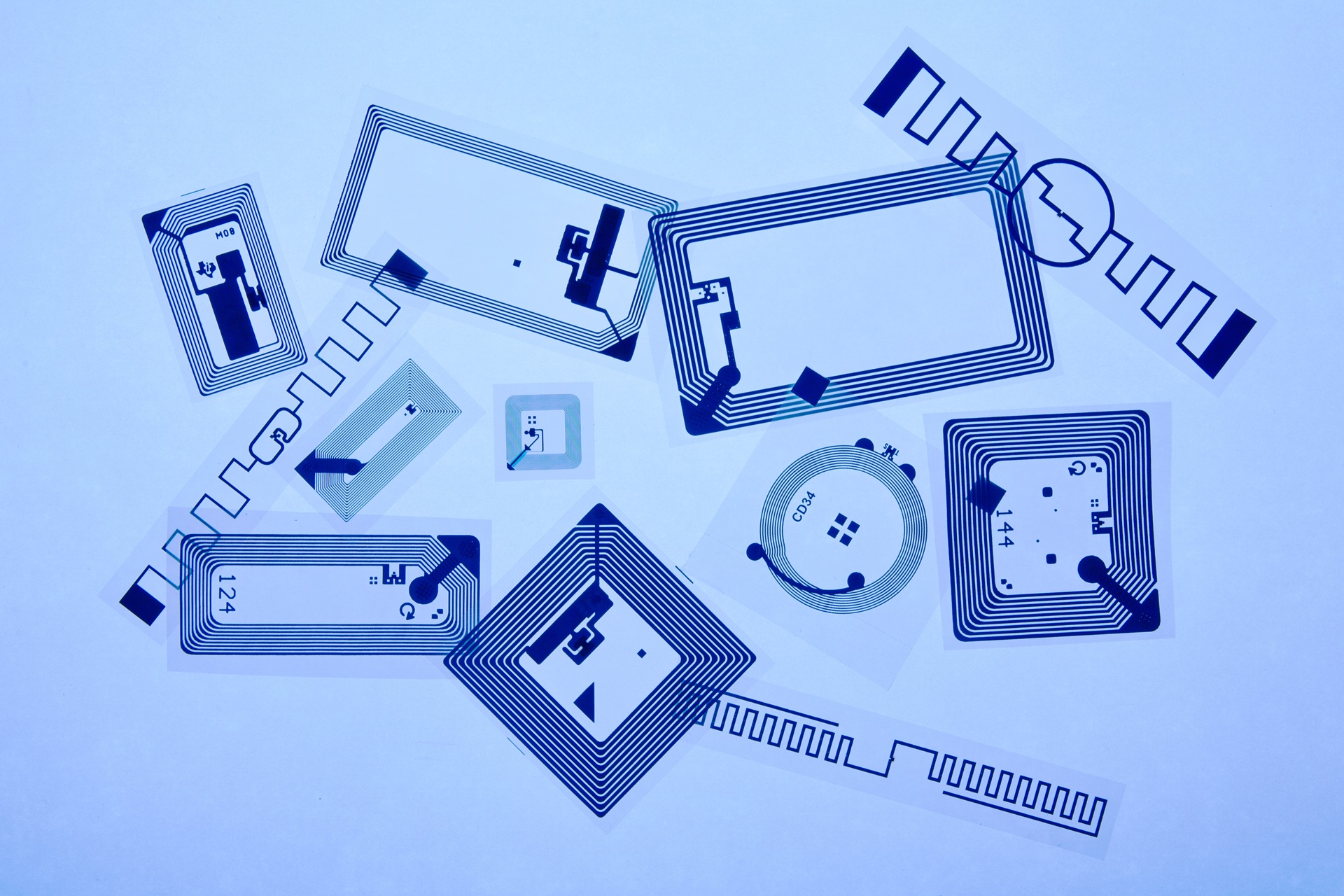RFID labelling is not an off-the-shelf solution. It is a complex blend of materials, electronics, data standards, and integration work – one that must be tailored to your packaging, your supply chain, and your business objectives.
As such, success depends not only on technology, but on the people and organisations you choose to work with.
Whether you are implementing RFID UHF for inventory accuracy, NFC for consumer engagement, or both, your partner will influence:
- how well your labels perform under real conditions;
- how reliably data is captured and encoded;
- how smoothly your systems integrate; and
- how quickly you can scale and iterate.
A good RFID labelling partner brings not just hardware or labels, but:
- experience from prior deployments;
- best practices for testing and rollout;
- access to the right materials and inlays; and
- insight into sustainability, compliance, and standards.
A poor partner, on the other hand, can delay your project, increase costs, and compromise outcomes – even if the tags themselves appear correct on paper.
This chapter outlines how to identify the right RFID labelling partner for your needs, how to work effectively with them, and what to expect from a modern RFID supplier. It is not about procurement – it is about collaboration.
Types of RFID labelling partners
The RFID labelling ecosystem includes multiple types of providers – each with a specific role to play. Depending on your project scope, you may work with some or all of the following:
a) Label converters with RFID capabilities
These companies:
- integrate RFID UHF/NFC inlays into self-adhesive or flexible labels;
- match label design to packaging substrates;
- print, encode, and quality-control each label; and
- advise on adhesives, facestocks, and sustainability.
They are your primary source of finished labels – and a key resource for customisation and scale-up.
b) RFID inlay and material suppliers
Inlay manufacturers produce the functional core of a smart label – the antenna and chip. They offer:
- a range of inlay designs for different substrates and read environments;
- sustainable or recyclable inlay options; and
- technical data on performance, memory, and frequency tuning.
You may not deal with them directly – but your converter will. Their choice of inlay affects read range, durability, and compatibility.
c) System integrators
These partners focus on the software and hardware infrastructure needed to use RFID data. They provide:
- reader and antenna installation;
- middleware and data routing;
- encoding logic and commissioning platforms; and
- dashboards and event triggering.
They connect your physical tags to your ERP, WMS, or marketing tools – making the labels useful in practice.
d) Encoding and printing service providers
In some projects, encoding is outsourced – especially for high volumes or regulated products. These providers:
- serialise and program each tag;
- validate encoding accuracy; and
- ship labels pre-encoded and tested.
They are often used when you lack internal print/encode capacity.
e) Compliance and data standards consultants
For regulated industries or GS1-compliant supply chains, specialist consultants can:
- define your encoding rules and identifier formats;
- ensure compliance with DSCSA, FMD, UDI, or Digital Product Passport requirements; and
- assist in audits and traceability documentation.
They are especially valuable when navigating unfamiliar standards or cross-border implementations.
Understanding these roles will help you build the right team – and avoid gaps in capability during rollout.
What to look for in a label converter
Your label converter is the core partner in any RFID labelling programme. They are responsible not only for producing the physical label – but also for ensuring that it performs, encodes, and applies correctly under your real-world conditions.
Choosing a converter with RFID label expertise is critical to achieving consistent quality, supply continuity, and performance.
Here is what to look for:
a) RFID expertise and infrastructure
A smart label converter should:
- have in-house capability to integrate RFID inlays into your label construction;
- understand UHF and HF tag placement, shielding, and material compatibility;
- support multiple inlay vendors and antenna types; and
- offer both wet and dry inlay formats, as appropriate.
Ask for examples of successful deployments – preferably in your sector.
b) Material and adhesive knowledge
Converters should:
- match facestocks and adhesives to your packaging substrate;
- adjust construction for curved, metallic, cold, or moist surfaces;
- offer sustainable alternatives (eg paper-based inlays, compostable liners); and
- understand how label structure affects signal strength and durability.
RFID labels behave differently from standard ones – and your converter must know how to adapt.
c) Print and encode capabilities
Look for converters that can:
- encode RFID tags in-line during print runs (we can);
- apply variable data (serial numbers, expiry, EPC codes);
- align encoding with your data structure (eg GS1, Digital Link); and
- lock and verify tags where necessary (eg in pharma or luxury).
This reduces the need for a separate encoding step and streamlines quality assurance.
d) Quality control and verification systems
Ensure the converter offers:
- 100% read testing of encoded tags;
- rejection of voided or defective labels;
- statistical reporting of failure rates; and
- audit-ready documentation and traceability logs.
For regulated sectors, these QA measures are not optional.
e) Scalability and responsiveness
As your volume grows or your use case expands, your converter should:
- scale production reliably;
- offer flexible lead times;
- manage raw material continuity (eg inlay sourcing); and
- support co-development of new formats.
Choose a partner with both capacity and a collaborative mindset.
In summary, a strong label converter is more than a printer – they are a technical partner, materials expert, and quality gatekeeper for your RFID labelling system.
Integration expertise
RFID technology is only as powerful as the systems it connects to. If data from a tag cannot be captured, processed, and acted upon – it is effectively wasted.
That is why integration matters. A good RFID labelling partner will help you not only apply and encode tags, but also make them work within your digital ecosystem.
Reader setup and tuning
System integrators and advanced converters can:
- install handheld, fixed, or embedded RFID readers;
- tune antenna placement and power to your layout and workflow;
- test read reliability under operational conditions; and
- ensure safety, interference avoidance, and compliance with radio standards.
Poorly installed readers are a common cause of read failures – your partner should know how to avoid this.
Middleware and data routing
You need software that:
- captures tag reads in real time;
- filters noise (eg duplicate scans);
- links reads to business events (eg receiving, packing, checkout); and
- routes data to ERP, WMS, MES, or CRM systems.
Look for partners who support industry-standard middleware or offer customisable platforms with open APIs.
Encoding and commissioning tools
Your partner should help define:
- how tags are encoded (eg EPC, GTIN + serial, URL, SKU + batch);
- when and where tags are commissioned;
- who owns the encoding rules and serialisation pool; and
- how duplicate or invalid tags are prevented.
Encoding must be consistent, secure, and standardised – especially in shared supply chains.
User interface and system logic
Beyond raw data capture, partners may assist in:
- building dashboards or alerts for staff;
- integrating with mobile apps or handheld devices;
- managing exceptions and scan failures; or
- setting up tap-based engagement journeys (for NFC).
Without this layer, your system may work – but no one will use it effectively.
Conclusion:
RFID labels are only one half of the system. Your integration partner makes the other half work – ensuring that data becomes value, not noise.
How to brief your RFID partner
Strong partnerships require clear communication from the start. Your RFID labelling partner cannot deliver what you need unless they understand your goals, constraints, and expectations.
A good project brief will reduce rework, speed up development, and ensure a solution tailored to your real-world context.
What your RFID partner needs from you
Prepare to share the following:
- Use case description:
What problem are you solving (eg traceability, inventory, anti-fraud)? - Label requirements:
Size, shape, facestock, adhesive, colours, pre-print needs. - Packaging details:
Substrate (eg glass, PET, foil), curvature, surface conditions, temperature ranges. - Application method:
Manual, semi-automatic, or automated label applicators. - Volume forecast:
Expected label quantities per SKU, per quarter or year. - Compliance requirements:
Industry standards, regulatory frameworks, audit expectations. - Data and encoding rules:
What should be encoded on the tag? What format? Is serialisation required? - Reader infrastructure:
Existing or planned reader types, scan environment, and expected scan points.
Questions to ask your partner
- What inlay types do you recommend – and why?
- Can you provide samples for testing?
- What is your QA process and rejection rate?
- Do you offer encoding and print services?
- How do you manage lead times and stock continuity?
- Can you help with sustainability goals (eg recyclable materials, liner recovery)?
- Have you worked in our industry before?
These questions will quickly distinguish experienced partners from basic vendors.
Aligning timelines and expectations
Set clear expectations around:
- delivery milestones;
- prototyping and iteration cycles;
- required documentation;
- integration or pilot support; and
- post-launch service (eg reader tuning, data review).
Treat your partner as part of your project team – not just a supplier.
When both sides communicate openly, iterate quickly, and respect each other’s expertise, RFID labelling projects run smoothly – and deliver greater long-term value.
Pilot support and co-development
No RFID labelling deployment begins at full scale. Piloting is essential – and your partner’s ability to support early-stage experimentation is a key predictor of long-term success.
A capable partner does not just ship samples – they co-develop and optimise with you based on your real-world environment.
Sampling and prototyping
Your partner should:
- provide a variety of RFID inlays suited to your application (UHF, HF, metal-friendly, etc.);
- convert them into sample labels using your specified materials and layouts;
- support tests on both flat and curved packaging surfaces; or
- assist in evaluating read distance, orientation sensitivity, and adhesive performance.
These early-stage prototyping help avoid failure at the production line or in the supply chain.
Application and process trials
Converters and integrators can help run:
- test runs on your existing labelling machines;
- mock-ups of reader setups (eg portals, gates, point-of-sale counters);
- QA simulations (eg encoding and verification steps); or
- destruction or voiding scenarios (eg tamper-evident tag functionality).
These trials often uncover practical issues – like alignment tolerance or adhesive shear – that need resolving before full deployment.
Data collection and iteration
Your RFID partners should:
- collect performance data during pilot use (eg read rates, encoding errors);
- advise on adjustments (eg antenna change, placement tweaks, reader power tuning); and
- share logs and dashboards that help justify scaling.
This feedback loop turns the pilot into a learning platform – not just a pass/fail test.
Co-development of final specs
Based on pilot results, your partner will help finalise:
- label construction (face, liner, adhesive);
- inlay choice and placement;
- data structure and encoding format;
- QA protocols and fail-safe thresholds; and
- supply chain delivery timelines and volumes.
By investing in a strong pilot phase, you create shared confidence and a tailored specification ready for rollout.
Data handling and encoding standards
RFID labels are only valuable if the data inside them is structured, secure, and usable. Encoding is not just about writing numbers onto a chip – it is about ensuring interoperability, accuracy, and compliance.
Your RFID partner plays a central role in managing how tags are encoded, where data resides, and who controls the rules.
EPC and GS1-compliant encoding
In B2B supply chains, many partners require RFID to use GS1 EPC formats, such as:
- SGTIN (Serialized Global Trade Item Number);
- SSCC (Serial Shipping Container Code); or
- GRAI, GIAI, GLN, and others.
These formats ensure that:
- tags are globally unique;
- item data can be decoded by any GS1-compliant system; and
- regulatory and audit requirements are met.
Your partner should support EPC tag commissioning and validation.
NFC and consumer data formats
For NFC tags, encoding may follow:
- NDEF (NFC Data Exchange Format);
- GS1 Digital Link; or
- proprietary URL structures or JSON payloads.
Tags may direct users to:
- product pages;
- authentication platforms;
- batch-specific documentation; or
- loyalty or CRM portals.
NFC encoding must be secured to prevent URL spoofing or manipulation.
Who manages serialisation?
Serialisation creates unique identifiers for each tag. Your team must define:
- the serial number range or pattern;
- who generates and tracks the codes (you, your partner, a third party);
- how duplicates are prevented; and
- how data flows back into your systems.
Your partner can assist in:
- building or connecting to a serialisation engine;
- logging encoded tags; and
- enabling audit traceability.
Local versus cloud encoding
Options include:
- encoding at the converter level (before delivery);
- encoding in your facility (at print-and-encode stations); or
- dynamic encoding via cloud APIs (eg EVRYTHNG, Blue Bite, Tapwow).
The right approach depends on your speed, volume, and IT architecture.
Data governance
Agree on:
- data format ownership;
- retention policies;
- encryption or access control; and
- how encoding changes are managed over time.
Well-managed encoding is the foundation of every RFID labelling programme – and your partner should guide you with both rigour and flexibility.
Logistics, lead times, and continuity
Once your RFID labelling programme moves into full production, your ability to maintain uninterrupted supply becomes critical. RFID labels require more complex sourcing than traditional labels – and your partner must have the logistics maturity to match.
High-MOQ components and lead times
RFID inlays and chips often come with:
- high minimum order quantities (MOQ);
- 4–10 week lead times from manufacturers; and
- regional or global sourcing variability.
This is especially true for:
- sensor tags;
- custom antenna designs; and
- NFC chips with enhanced memory or security.
Your partner should:
- help forecast demand;
- buffer critical components where needed;
- advise on dual-sourcing or inlay substitution strategies.
RFID label production and delivery schedules
RFID label production takes longer than standard printing – due to:
- inlay lamination;
- inline encoding;
- 100% quality control testing; and
- print + encode + pack workflows.
A reliable partner will:
- communicate production timelines clearly;
- deliver partial batches if needed for pilot or ramp-up;
- support multiple plant deliveries or regional splits; and
- work within your just-in-time or stock holding model.
Redundancy and continuity planning
Ask your partner:
- Do you have backup converters or production lines?
- Can you switch to alternate inlays if one is discontinued?
- What is your disaster recovery plan for encoding data?
Continuity is especially important for regulated industries, where product release may be blocked without valid tags.
Post-implementation support
Support does not end at delivery. Your partner should offer:
- reader calibration help;
- QA issue triage;
- inlay change impact analysis;
- updates to encoding formats as standards evolve; and
- performance reviews and optimisation sessions.
This ensures the system continues to deliver value long after launch.
Choose a partner, not just a vendor
RFID labelling is a journey – not a transaction. Your label, integration, and software partners play a central role in turning technology into impact.
The best partners:
- understand your business goals;
- adapt their solutions to your packaging and systems;
- bring technical depth and hands-on testing;
- communicate openly and plan for continuity; and
- help you scale, evolve, and sustain over time.
They are not there just to sell tags. They are there to deliver outcomes.
So when choosing a partner:
- prioritise experience over price alone;
- look for industry alignment and certifications;
- define data rules and responsibilities early; and
- invest in joint planning, pilots, and feedback loops.
With the right RFID partner, your RFID labelling programme will be faster to deploy, more reliable in use, and more successful in the long term.







